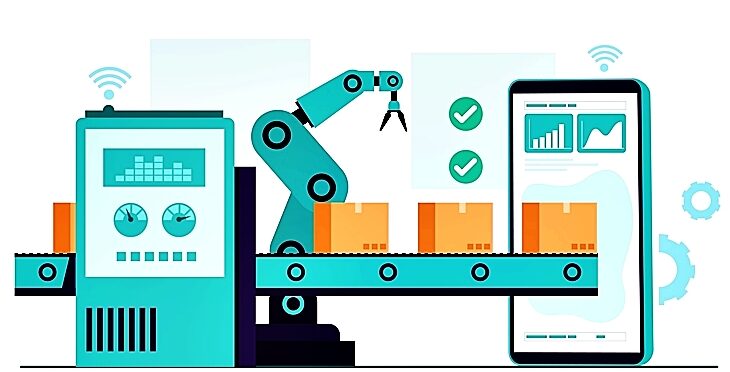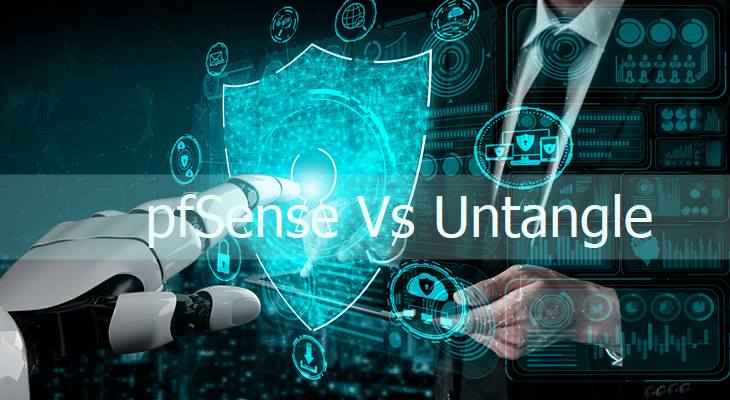Introduction to Cognitive Robotic Process Automation
Cognitive Robotic Process Automation refers to tools and solutions that use AI technologies like Optical Character Recognition (OCR), Text Analytics, and Machine Learning. It improves the experience of the employees and customers.
This advanced type of RPA gets its name from the way it imitates human actions. Learning, reasoning, and self-correction are examples of such processes.
Automation based on structured data is supported by traditional RPA. Cognitive RPA also allows businesses to automate processes involving unstructured data sources. These sources include scanned documents, emails, letters, and voice recordings. The true value of cognitive automation is that it allows businesses to automate tasks that are more complex and less rule-based.
Cognitive RPA, unlike traditional unattended RPA, is capable of handling exceptions. It also does not need any human intervention.
Cognitive Robotic Process Automation Application Areas
Chatbots
Chatbots are becoming more popular. But, their effectiveness is limited by how well they are integrated into the systems. A customer, for example, will not be able to change her billing period through the chatbot if they are not integrated into the legacy billing system. Building chatbots that can make changes in other systems is now possible thanks to cognitive automation.
Meeting KYC requirements
Perform required KYC checks using public records, handwritten customer input, and scanned documents.
Processing of Trade finance transactions
International trade is financed by banks. Processing these transactions necessitates the completion of paperwork and regulatory checks. These checks include sanctions checks and proper buyer and seller apportionment.
Policies for customer service
To make automated policy decisions, data mining and natural language processing techniques are used. It extracts policy data and the impacts of policy changes.
Processing of claims
Based on policy and claim data, make automated claims decisions and notify payment systems.
Advantages of Cognitive Robotic Process Automation Application
Robotic Process Automation does not need any coding or programming skills. Modern RPA tools can automate applications across an enterprise in any department. RPA is helpful in performing clerical. As a result, employees only need to be trained on how RPA works. They can then create bots using a Graphical User Interface & various intuitive wizards. It has a big upside over traditional automation methods. It helps in the faster delivery of business applications. Also, this platform lowers the cost of setup, training, and deployment.
Code-Free
There is always a risky or complex transformation process. This prevents large organizations from redesigning, replacing, or enhancing the running system. It is one of the major challenges that IT deployment faces. Whereas the transformation process in RPA is very simple and straightforward. Cognitive Robotic Process Automation software robots access the end-user system in the same way that humans do. They adhere to existing security, quality, and data integrity standards. They avoid any type of disruption and maintain functionality and security.
Non-Disruptive
There is always a risky or complex transformation process. This prevents large organizations from redesigning, replacing, or enhancing the running system. It is also one of the major challenges that IT deployment faces. Whereas the transformation process in RPA is very simple and straightforward. Cognitive Robotic Process Automation software robots access the end-user system in the same way that humans do. They adhere to existing security, quality, and data integrity standards. They avoid any type of disruption and maintain functionality and security.
Cognitive Robotic Process Automation Application is User Friendly
RPA does not need specialized knowledge, such as coding, programming, or extensive IT knowledge. The software is also simple to use, understand, and install. RPA tools use a built-in screen recorder component. It also captures mouse clicks and keystrokes, allowing users to create bots quickly. There is a Task Editor feature in some RPA software. It allows the user to manually create and edit bots.
The Rich-Analytical Suite is a collection of tools for analyzing data
The RPA software includes an analytical suite that evaluates the robot workflows' performance. The analytical suite also helps to monitor and manage automated functions. All this can be done from a centralized console that has access from any location. It provides statistics on robots, workflows, and other topics. The analysis also helps users to track operations. It also helps them in identifying issues. There is no need for integration because everything is built-in and ready to use right away.
Security
When a company runs on automation, more employees will want to use RPA software. As a result, having robust user access management features is critical. Role-based security capabilities can be assigned to RPA tools to ensure action-specific permissions. All automated data, audits, and instructions that bots can access are encrypted to prevent malicious tampering. The enterprise RPA tools also provide detailed statistics on user logging, actions, and each completed task. As a result, it ensures internal security and complies with industry regulations.
Exception Handling Based on Rules
Users can deploy bots using the RPA system's rules-based exception handling. This feature handles the exception in a proactive manner. When the RPA robot reports an exception, the following actions take place:
- The server reassigns the same process to a different bot.
- The current bot repeats the process and removes the previous bot from production.
- If the retry is successful, the server keeps the reassignment. It then raises an exception and resolution alert.
- If the retry fails, termination of the current bot takes place. An alert is then raised to report the exception as well as the failed resolution.
Options for Hosting and Deployment
The RPA system supports virtual machines, terminal services, and cloud deployments. Because of its scalability and flexibility, cloud deployment is one of the most popular among all the other deployment options. As a result, businesses can deploy RPA tools on servers. They can also install them on desktops to access data and complete repetitive tasks. Robotic process automation (RPA) systems can also deploy hundreds of robots at once. While processing a large amount of data, multiple bots can also run different tasks within a single process.
The use of Intelligence
This RPA feature denotes the ability to acquire and apply knowledge in the form of skills. Robots collect data, convert it to information. They then transform that information into actionable intelligence for users. RPA solutions often include artificial intelligence and cognitive intelligence. This helps bots make better decisions over time.
Debugging
Debugging is one of the most significant advantages of RPA from a development viewpoint. While making changes and replicating the process, some RPA tools need to stop. While debugging, the rest of the RPA tools allow for dynamic interaction. It allows developers to test various scenarios by changing the variable's values. They don't need to start or stop the running process. This dynamic approach enables rapid development and resolution in a production environment. It thus eliminates the need for process changes.
Disadvantages of Cognitive Robotic Process Automation Application
Employee Resistance
People get used to their routines, and any change in the workplace can cause anxiety among employees. People who work with new technology are given new responsibilities and will need to learn new concepts about that technology. Existing employees may resign as a result of the fact that not everyone has the same level of knowledge.
Hiring Skilled Staff
Many businesses believe that to work with RPA, employees must have extensive technical knowledge of automation. There is common thinking that robots may need programming and knowledge of how to operate them. It also forces businesses to either hire skilled employees or train existing employees to improve their skills. During the initial installation and set-up, an automation company can be useful. But, skilled personnel can only adopt and manage robots in the long run.
Job Losses That Could Happen
There is an assumption that if a robot can work faster and at a more consistent rate, there will be no need for human input. It is the primary concern of employees, and also it poses a significant threat to the labor market. This viewpoint is incorrect. Amazon is a great example of this constraint. The employment rate has risen during a period in which the number of robots has increased from 1000 to over 45000.
Costs of the Initial Investment
RPA is still in its early stages of development. It may present challenges that lead to unintended consequences. As a result, deciding whether to invest in robotic automation or wait for its expansion is difficult for businesses. Also, when considering the implementation of this technology, a comprehensive business case must be developed. Moreover, if a case study is not done, it will be useless if the returns are only minimal. This may not be worth the risk.
Conclusion
RPA and CRPA will not take the place of humans. Rather, they're meant to make their jobs easier and faster. Artificial intelligence helps to predict machine failure rates, detect sentiment, and recognize facial images. Artificial General Intelligence (A.G.I) at the human level is in development. RPA and CRPA will enable systems to learn, plan, and make decisions on their own. It will also help them to communicate in a variety of natural languages.





